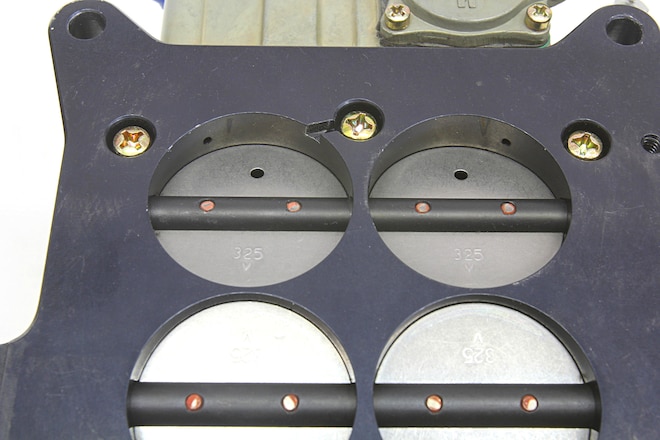cj's mopar
Well-Known Member
I don't know if this is a common folk question about Holley carb secrets or not but here goes.
My dad has a nicely warmed up 383 with Eddy rpm heads and intake .
The cam is a 275 Comp hi lift with 525!lift.
I know it has always run good with 750!hp Holley vac secondary carb.
But I believe it needs more air into the engine to run even better.
The timing is set at 18 deg with about 14 to 16 on the plate all in by 2800 and has vacuum advance hooked up and working fine.
I noticed that when I pull off manifold vacuum cap below the carb I can lower the idle speed down and get better adjustable idle.screws adjustmemt. With the manifold vacuum port plugged I loose adjustability and need to open throttle to get idle . Idles perfect with vacuum leak 900 rpm.
With no vacume leak idle is rough at 1100 rpm.
Believe getting into the transition slot to get idle .
I think it needs air in intake how do you know where to start on the hole size if you drill the blades? is 1/8 on the primary a good starting size or should I go smaller?
Sorry about the long winded question.
My dad has a nicely warmed up 383 with Eddy rpm heads and intake .
The cam is a 275 Comp hi lift with 525!lift.
I know it has always run good with 750!hp Holley vac secondary carb.
But I believe it needs more air into the engine to run even better.
The timing is set at 18 deg with about 14 to 16 on the plate all in by 2800 and has vacuum advance hooked up and working fine.
I noticed that when I pull off manifold vacuum cap below the carb I can lower the idle speed down and get better adjustable idle.screws adjustmemt. With the manifold vacuum port plugged I loose adjustability and need to open throttle to get idle . Idles perfect with vacuum leak 900 rpm.
With no vacume leak idle is rough at 1100 rpm.
Believe getting into the transition slot to get idle .
I think it needs air in intake how do you know where to start on the hole size if you drill the blades? is 1/8 on the primary a good starting size or should I go smaller?
Sorry about the long winded question.
Last edited:
















